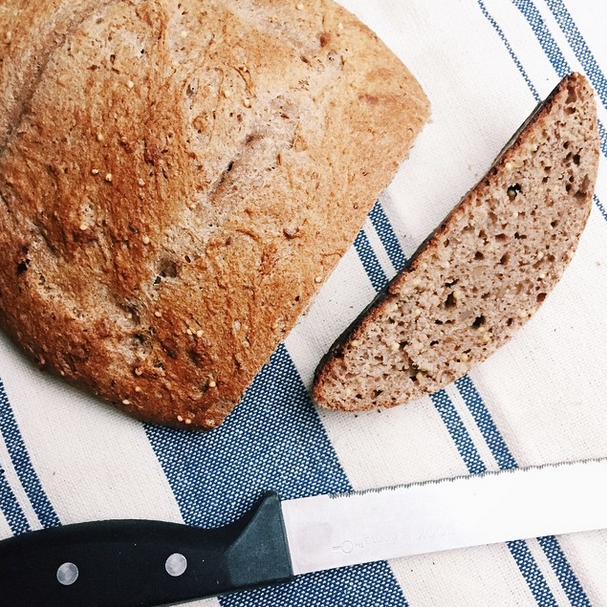Share This
For decades rye has been one of America’s best-kept and undeservedly obscure culinary secrets, and I rejoice that others have begun discovering its joys.
–Stanley Ginsberg, The Rye Baker
Amidst the squishy white-wheat loaves of my suburban Texas childhood, rye flour was largely uncharted territory. Like many, I associated rye with the earthy, anise flavor of caraway seeds, underestimating the flavor range that this versatile, complex grain is capable of. But as more pastry chefs and bakers experiment with whole grain flours, rye is finding its way onto my plate in the most unexpected of ways, and my taste buds couldn’t be happier.
Flaky, rye croissants are on the menu at New York’s acclaimed Great Northern Food Hall, and down in Brooklyn, the rye and buckwheat streusel toppings at Four and Twenty Blackbirds have attracted national praise. For many bakers, like Four and Twenty Blackbirds’ Christina Razon, rye is an economical entry point into the local grain movement. Rye is a hardy crop with a knack for thriving in areas too wet or cold for other grains. What’s more, rotating crops with rye in the off-season can help protect against soil erosion, and also deliver nutrients back to the soil.
However, the real selling point is rye’s rich, nutty flavor. Any ingredient that marries well with chocolate is destined for culinary success, and rye is no exception. Just this year, Boston bakery guru Joanne Chang updated her famous double chocolate chip cookie recipe with rye flour, as part of Flour Bakery’s new WHOLEflour campaign. Similarly, Claire Ptak, of The Violet Bakery Cookbook, writes:
“I’d been making brownies with spelt flour for over a year and thought they couldn’t be bettered. But after reading Chad [Robertson’s] book I decided to try making them with whole grain rye flour. The result was a chewy, rich, gooey, nutty chocolate treat. I immediately adjusted my recipe and haven’t looked back.”
Similarly, pastry chef Karen Hatfield, who sells a chocolate pie with rye crust, and chocolate chip cookies with rye, tells the LA Times, “the flavor is subtle, a bit nutty, and definitely offers a complexity not achieved with all-purpose flour.” Desserts aside, rye also lends itself beautifully to breads, from the dark, sour breads of Russia and the Baltics, to the sweet, crisp loaves of Sweden, Finland, and Iceland.
Unlike imported ancient grains (like teff, quinoa, or amaranth), rye has been a steady character in the American foodscape for centuries. Once a supporting actor, typecast for Reuben sandwiches and pumpernickel, rye is showing off its range in a number of different roles. And this isn’t a performance your taste buds will want to miss. (Kelly)


Add a Comment